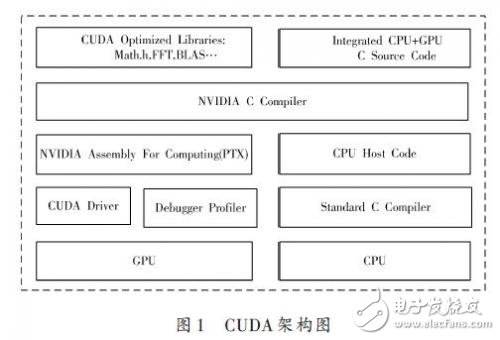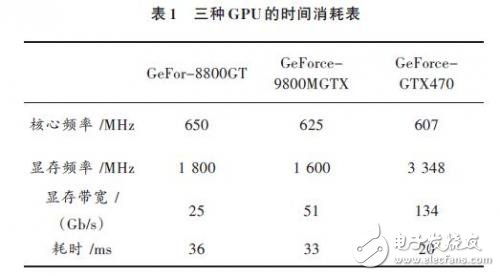In recent years, with the gradual deepening of the application of large-screen display technology in various fields, the market has not satisfied the single film display, and more has turned to the fusion display of the more interactive computer desktop environment. At present, the mainstream desktop fusion system on the market mostly uses hardware auxiliary devices such as split screens, which have high cost and poor performance.
Compute Unified Device Architect- ure (CUDA) is a general-purpose parallel computing architecture introduced by NVIDIA in recent years. It relies on high-performance graphics GPUs as hardware, and CPU/GPU hybrid computing is greatly improved. Large-scale graphical data real-time processing efficiency. The video display system designed in this paper uses CUDA development method to realize the three aspects of computer desktop image segmentation calculation, Bezier curve fitting, and fusion image calculation. The real-time performance is high, and the theoretical calculation of the image data is 14 pixels with good precision.
1 system frame design
The essence of image processing is large-scale matrix operations, which are especially suitable for parallel processing. However, CPU general-purpose computing is difficult to take advantage of this feature. In contrast, GPUs have powerful computational power for parallel data operations, and are particularly suitable for operations with the same operator and different data. When performing multiple data elements with high computational densities, the latency of memory access can be ignored. The CUDA programming model uses the CPU as a host and the GPU as a coprocessor or device. Multiple devices can exist in a system. In this model, the CPU works with the GPU, the CPU is responsible for logical transaction processing and serial computing, and the GPU focuses on performing highly threaded parallel processing tasks.
The system uses the computing platform built by NVIDIA GeForce GTX470 as the operating environment, and uses the multi-head output feature of the graphics card to connect multiple projectors to form a spliced ​​screen array without additional hardware equipment. Due to the large image data and high real-time performance of the desktop fusion display system, the software design of the system widely uses multi-CPU parallel programming technology and CUDA parallel computing technology for image processing and display of each projection device. The system will allocate a special thread to handle. The thread will correspond to a fixed CPU and a fixed GPU computing core, ensuring that the multi-projection device is completely parallelized, thereby avoiding the performance degradation caused by the increase in processing data due to the increase of display devices in other systems. The CUDA architecture is shown in Figure 1.

In the design of this system, the timer is first set. Regularly collect control screen image information and save it to the common storage space, and then open several threads for the peripheral display device number to complete image data segmentation, image data fusion and image display. The thread is initially associated with the fixed GPU computing core, and the data graphics segmentation and fusion part is implemented by CUDA technology. Finally, the timer technology is used to synchronize the image data display work in each thread.
The Bezier curve fitting method is usually used to complete the fusion of image data. The general method of the method is to first obtain the Bezier curve of each line of the target image from the control point, form a two-dimensional Bezier surface, and then fit the target image data to the Bezier curve by means of texture. Image distortion. Bezier curves are a way to define curves and surfaces with control polygons. Its fitting interpolation formula is:

Where: Pi is the characteristic polygon constituting the curve; Bi, n(t) is the Bezier basis function, which is a harmonic function of the position vector of each point on the curve. The start and end points of the Bezier curve coincide with the end points of the feature polygons, and the tangent direction of the start point and the end point coincide with the first and last edges of the feature polygon.
The curve has characteristics such as convexity and symmetry. The advantage of the Bezier curve is that it can fit curves of any shape given enough control points.
In the fitting interpolation formula of the Bezier curve, the number of functions corresponds to the number of vertices of the feature polygon. When the number of vertices of the feature polygon is 4, a cubic Bezier curve is formed. The fitting interpolation formula for the cubic Bezier curve is:
![]()
OPenGL technology provides easy-to-operate Bezier curve generation functions and texture functions, but it cannot control hardware operations and is not efficient. In order to consider the timeliness, the system does not adopt this method in the implementation process, but uses the CUDA technology parallel matrix operation to perform texture mapping. According to the structural characteristics of the CUDA program, when the system processes, firstly, according to the control point information obtained by the human-computer interaction part, the Bezier curve of each line of the target image is generated by the usual method. The memory is opened and stored in the GPU, and then corresponding to the CUDA program structure, each pixel on the target image is assigned a GPU thread for processing.
Observing the above calculation formula, it is found that when the initial control point coordinates are obtained, in the process of obtaining the points on each Bezier curve, they do not affect each other, and have the coarse-grained characteristics of multi-threading, so CUDA parallel computing The timeliness has been greatly improved.
2 Performance evaluation
Real-time performance is the most basic and important indicator in multimedia splicing systems. The large-screen stitching dynamic effect we watched is generated by the quick display of one frame and one frame of image. According to the normal human visual residual level system to achieve a smooth display, 1s to process at least 25 pictures, that is to say, the entire process of image processing will not exceed 40ms. The following article will analyze the timeliness of the system.
Since the image acquisition part and the processing part adopt the asynchronous method and time multiplexing, it is obvious that the processing part takes much longer than the acquisition part, so only the time consumption of the processing part is listed, and because the efficiency of the part is mainly affected by the graphics card GPU. Performance impact, so compare the time consumption of different models of GPU. The details are shown in Table 1.

From this we can see that the GeForce8800GT graphics card can basically complete the display function, while the GeForce GTX470 can display 35~40 images per second, which is a video experience that users feel completely smooth.
3 Conclusion
This year, the demand for computer operation demonstrations on the big screen is increasing, and the development of high-performance graphics cards has made GPU computing an important solution for large-scale parallel computing. The system adopts CUDA technology to realize the video splicing system. At present, the system adopts two double-headed graphics cards to form a display function module to realize up to four screen splicing. If more screen splicing display is needed, the network CS structure can be considered for expansion. Since the time-consuming image processing part is completely calculated by the GPU, the more the screen needs to be calculated, the more the number of system graphics cards increases, so the system does not degrade with the increase of the splicing screen. Since the system adopts parallel technology as a whole, it is convenient to add the popular human-computer interaction module and realistic rendering module to the system in the future, so that it can truly become a high-performance multimedia display system, giving users a full-scale real experience. .
Stainless Steel Snake Bone Tube
ShenZhen Haofa Metal Precision Parts Technology Co., Ltd. , https://www.haofametal.com
